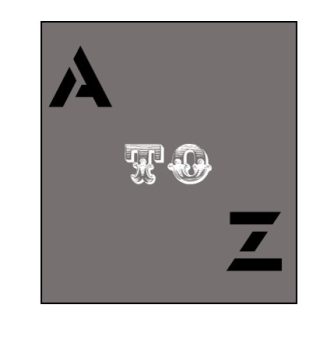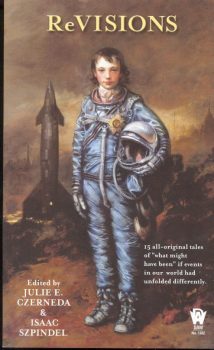A to Z Reviews: “When the Morning Stars Sang Together,” by Isaac Szpindel
 Isaac Szpindel’s “When the Morning Stars Sang Together” appeared in the 2004 alternate history anthology ReVisions, which Szpindel co-edited with Julie E, Czerneda, which explored alternative technological advancements. Szpindel’s story, set in the twentieth century, looks at a world in which Galileo reconciled science with the Church rather than being persecuted for championing the scientific method.
Isaac Szpindel’s “When the Morning Stars Sang Together” appeared in the 2004 alternate history anthology ReVisions, which Szpindel co-edited with Julie E, Czerneda, which explored alternative technological advancements. Szpindel’s story, set in the twentieth century, looks at a world in which Galileo reconciled science with the Church rather than being persecuted for championing the scientific method.
The main character has been given access to letters written by Galileo to his older daughter, Maria Celeste, who was a nun at the San Matteo convent. In real life, while Maria Celeste’s letters to Galileo have survived, his letters to her are lost. Szpindel tells his story by alternating between the text of those lost letters and the events which are happening to the modern scholar who is studying them and coming to conclusions that, in his world, as are heretical as the conclusions Galileo came to in our world in the seventeenth century.

Although Szpindel ties the two periods together by the end of the story, slowly revealing the heresy and fears the modern scholar has, there is a disjointed aspect to the story since the two periods don’t quite align with the letters and the modern conclusions not necessarily following each other.
The letters Galileo wrote to Mary Celeste are more interesting and better paced than the modern story. Although recounting what is, in the story’s universe, history, the letters show progress. Galileo has moved beyond the refractors of his own time to invent the reflecting telescopes that wouldn’t be invented in our own timeline until Isaac Newton did so a quarter century after Galileo’s death. With that under his belt, Galileo also jumpstarted the creation of the clock drive so he wouldn’t have to adjust the telescope, Newton’s experiments into the spectrum, photography, and the Doppler effect.
On the other hand, Szpindel plays the modern part of the story close to the chest. From the opening lines, it is clear that his modern Jesuit scientist is concerned about being arrested for the conclusions he has reached by reading Galileo’s letters, but Szpindel only hints at his discoveries throughout the story. Rather than building suspense, this technique causes those sections of the story to feel almost irrelevant to the more grandiose story told in Galileo’s letters.
Eventually, there is some activity in the modern section of the story, but it comes too late, and Szpindel continues to try to prolong the reveal of what is happening. When he introduces a twist to this section of the story, it comes as too little, too late. The reader care more about the centuries dead Galileo than they do about the living character whose life is being turned upside down.
Although part of the problem with “When the Morning Stars Sang Together” is the pacing, a bigger part of the problem is the focus. By providing information about Galileo’s anachronistic discoveries, but also building a relationship between Galileo and his daughter, his son, and his assistant, Szpindel is making the reader care about them. By shrouding the modern day character in mystery to build a sense of suspense, to the extent that the character is never named, Szpindel makes it difficult for the reader to care about him.
 Steven H Silver is a twenty-time Hugo Award nominee and was the publisher of the Hugo-nominated fanzine Argentus as well as the editor and publisher of ISFiC Press for eight years. He has also edited books for DAW, NESFA Press, and ZNB. His most recent anthology is Alternate Peace and his novel After Hastings was published in 2020. Steven has chaired the first Midwest Construction, Windycon three times, and the SFWA Nebula Conference six times. He was programming chair for Chicon 2000 and Vice Chair of Chicon 7.
Steven H Silver is a twenty-time Hugo Award nominee and was the publisher of the Hugo-nominated fanzine Argentus as well as the editor and publisher of ISFiC Press for eight years. He has also edited books for DAW, NESFA Press, and ZNB. His most recent anthology is Alternate Peace and his novel After Hastings was published in 2020. Steven has chaired the first Midwest Construction, Windycon three times, and the SFWA Nebula Conference six times. He was programming chair for Chicon 2000 and Vice Chair of Chicon 7.
That sounds like one of the more creative and niche alternate histories available; how saddening that it didn’t quite gel as a whole. Perhaps Szpindel will revisit it and work it into a longer but better-melded story where the frame is equal to to center.
I must have read this back then because I got that anthology for review, but I don’t recall the story. I assume Szpindel is Canadian, as he had an Aurora award nomination? But — another neat combination of letters in his name, anyway!